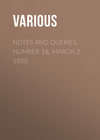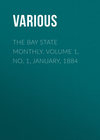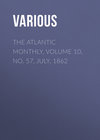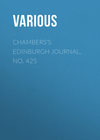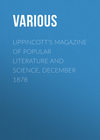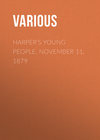Kitabı oku: «Notes and Queries, Number 18, March 2, 1850», sayfa 4
Under the view of inscriptions it occurs to my memory that in two or three places on the church of St. Brelade in Jersey, there are marked four vertical straight lines, which are interpreted by the natives to signify the Arabic numerals 1111; as the date MCXI of the building of the church. The church is evidently a very ancient one, and it is agreed to be the oldest in the island, and the island historians assign it to the early part of the 12th century. For these symbols being coeval with the building I do not vouch: as (though it is difficult to say what may constitute antiquity in the look of four parallel lines) I confess that to my eye they had "as modern a look" as four such lines could well have. The sudden illness of one of my party during our visit (1847), however, precluded my examining that beautiful spot and its interesting little church with the care I should have wished.
I may be allowed to suggest the necessity of some degree of caution in discussing this question: especially not to assume that any Arabic numerals which appear in ecclesiastical inscriptions are coeval with the dates they express; but rather inquire whether, from the condition of the stone bearing the inscription, these numbers may not have been put there at a later period, during repairs and alterations of the building itself. It is for many reasons improbable, rather than otherwise, that the Arabic numerals should have been freely used (if used at all) on ecclesiastical structures till long after the Reformation: indeed they are not so even yet.
But more. Even where there is authentic evidence of such symbols being used in ecclesiastical inscriptions, the forms of them will tell nothing. For generally in such cases an antique form of symbol would be assumed, if it were the alteration of a "learned clerk;" or the arabesque taste of the carver of the inscription would be displayed in grotesque forms. We would rather look for genuine than coeval symbols of this kind upon tombs and monuments, and the altar, than upon the building itself; and these will furnish collateral proofs of the genuineness of the entire inscriptions rather than any other class of architectural remains. The evidence of the inscriptions on "Balks and beams" in old manorial dwellings is especially to be suspected.
T.S.D.
Shooter's Hill, Feb 11, 1850.
Arabic Numerals.—If you think the following title will do for your correspondent "E.V." (No. 15. p. 230.), please to communicate it to him:
"Mannert, K., de Numerorum, quos arabicos voc., vera origine pythagorico; e. Fig. aen. 8vo. Nürnberg, 1801."
Oscar Heun.
Cambridge, Feb. 11. 1850.
Arabic Numerals (No. 15. p. 230.).—Your correspondent should consult Peacock's "History of Arithmetic" in the Encyclopædia Metropolitana; and, if he can get them, the notes to Chasles' Aperçu Historique des Méthodes en Géométric, and various papers of Mr. Chasles, published in the Comptes Rendus of the French Institute. He may perhaps find some information in De Morgan's Arithmetical Books, particularly at p. 14.
M.
THE FRATERNITY OF CHRISTIAN DOCTRINE—CHAUCER'S NIGHT CHARM
In a little work by Costanzi, entitled Le Istituzioni di Pieta che si esercitano in Roma, &c., and published A.D. 1825, in Rome, where the schools under the management of that brotherhood are in great favour, "C.F.S." will find much to interest him on the subject, though not exactly in the order in which he has put his queries (No. 14. p. 214.), nor to their full extent.
Mr. Thoms, to whom English mediæval literature is so much beholden, asks very earnestly for some information about "the white Paternoster" and "seynte Petres soster," (No. 15. p. 229.). Perhaps the following guesses may not be without use. First, then, about the "white Paternoster:"
Henry Parker, a Carmelite friar of Doncaster, who wrote his admirable Compendiouse Treatyse, or Dialogue of Dives and Pauper, during the reign of Edward IV., speaking against superstitions, and especially "craftes and conjurations with holy prayers," says:
"They that use holy wordes of the gospel, Pater noster, Ave, or Crede, or holy prayers in theyr wytchecraftes, for charmes or conjurations—they make a full hye sacrifice to the fende. It hath oft ben knowen, that wytches, with sayenge of their Pater noster and droppynge of the holy candell in a man's steppes that they hated, hath done his fete rotton of. Dr. What should the Pater noster, and the holy candell do therto? Pau. Ryght nought. But for the wytche worshyppeth the fende so highly with the holy prayers, and with the holy candell, and used suche holy thinges in despyte of God therefore is the fende redy to do the wytche's wylle and to fulfyll thinges that they done it for. 'The Fyrst Command,' cap. XXXV. Fol. 52. Imprynted by T. Berthelet, 1536. 12mo."
That the Pater noster used sometimes to be said with the wicked design of working ill to individuals, and by those who were deemed witches, is clear form the above extract: may not, then, this "wytche's" Pater noster be the "white" Pater noster, against which the night-spell in Chaucer was employed? "Wyche" may easily be imagined to have glided into "white."
"Seynte Petres soster," I suspect has a reference to St. Petronilla's legend. St. Petronilla, among our forefathers, was called St. Pernell, and The Golden Lengend imprinted 1527, by Wynkyn de Word, tells us, fol. cxxxi. b., that she "was doughter of saynt peter thappostle, whiche was ryght fayre and bewteous, and by the wyll of her fader she was vexed with fevers and akes." For a long while she lay bed-ridden. From the name of this saint, who went through so many years of her life in sickness, perhaps was borrowed the word "pernell," to mean a person in a sickly weak state of health, in which sense, Sir Thomas More (Works, London, 1557, p. 893) employs it, while bantering Tindal. St. Peter's daughter (St. Pernell) came to be looked upon, in this country, as the symbol of bad health under all its forms. Now, if we suppose that the poet mistook, and wrote "soster" instead of "doughter," we immediately understand the drift of the latter part of the spell, which was, not only to drive away witchcraft, but guard all the folks in that house from sickness of every kind.
Daniel Rock.
Buckland, Faringdon.
REPLIES TO MINOR QUERIES
By Hook or by Crook—Pokership—Gib Cat—Emerod.—I regret that very pressing business has hitherto prevented me from supplying an omission in my communication relating to the probable derivation of "By Hook or by Crook;" namely, my authority for saying there was evidence of the usage I referred to in forest customs. I now beg to supply that omission, by referring to the numerous claims for fuel wood made by divers persons at the justice seats held in the reigns of Charles I. and Charles II. for the New Forest, and which will be found at the Tower and Chapter House. Among others of these claims, I would mention that made by the tenant of land in Barnford, No. 112., who claims to have had the privilege, from time immemorial, of going into the king's wood to take the dead branches off the trees therein, "with a cart, a horse, a Hook and a Crook, and a sail cloth." Verily this necessity for a sail cloth seems to point very distinctly to his being obliged to collect his fire-wood "by Hook or by Crook." May I add, that I do not think that any of the notes I have seen hitherto, with reference to this subject, invalidate the supposition of the origin being forestal; all that they appear to me to prove is, that the saying is of long standing.
With reference to the query regarding the word Pokership (No. 12. p. 185.), I would observe, that the word is correctly copied from the grant, and that it was so spelt in all the previous grants that I have been able to refer to. As to the meaning of the word, I am of the opinion that it is intended to express the office of keeping the hogs in the forest, i.e. Porcarius. Pokership was probably spelt in early times Pawkership, from Pawn, I apprehend; subsequently it was either spelt or pronounced Paukership or Pokership. In corroboration of this view, I would mention, that on referring to the Pipe Roll, 6 John, county of Hereford, the following will be found:—"Hubert de Burgo, Et i libæ const. Parcario de heford, xxxs. vd." If, however, Parkership be deemed the more correct reading, still it does not of necessity apply to the custody of a park; it might have denoted the pound-keeper, for, in matters relating to manors, parcus means a pound.
With respect to the query about Gib Cat, you will find the subject treated on largely in the Etymologicon—I may say, exhausted.
By the bye, there can be no doubt that Emerod means Emerald; formerly Emerald would be spelt Emeraud, and the transition is natural to Emerode—Emerod. With regard to the supposed size being an objection to this reading, it will be found that anciently the matrix of the Emerald, which is tinged green, went by the name of the more valuable jewel.
T.R.F.
Spring Gardens, Feb. 1850.
Golden Frog (No. 14. p. 214.).—Sir John Poley's frog may have been a device alluding to his name; I imagine that Poley is an appelative of frogs. I find in Halliwell's Dict. of Archaic Words, "Pollywig," and in Jamieson's Scottish Dictionary, "Powlick," both meaning tadpole, and both diminutive forms; and Rowley Poley is closely (though not very logically) connected with the frog who would a-wooing go. The word has probably the same root as poole, puddle, &c.
R.R.
Madoc.—In addition to what is stated (No. 4. p. 56.) on this subject, may be noted, that in the MS. Add. 14,957. British Museum, fol. 149., is a letter from Dr. David Samwell to the Gwyneddigion Society, dated 23rd March, 1791, in which he states, that the result of an interview, held by himself and William Owen with General Bowles, "places the existence of a race of Welsh Indians beyond all matter of doubt." This race is identified with Padongas on the Missouri, who are said to be of a different complexion from the other Indian races, and to have books, which they were not able to read. Is this information to be depended on or not?
F.M.
MSS. of Sir Roger Twysden (No. 5. p. 76.).—Twysden's MSS. were purchased by Sir Thomas Sebright, in or before the year 1715, and in the Sebright sale at Leigh and Sotheby's, in 1807, appear to be two of the MSS. inquired after by the Rev. L.B. Larking, namely, Lot 1224., "Vita et Epistolæ Sancti Thomæ, Archiepiscopi Cant." (purchased by Heber, and, at his sale in 1836, resold [Lot 323.] to Sir Thomas Phillipps), and Lot 1225., "Epistolæ Beati Anselmi, Archieposcopi Cant.", purchased by Dardis; but what became of it afterwards I know not.
F.M.
Royal Genealogies (No. 6. p. 92.).—The inquirer will find, probably, what he requires, in a work by J.F. Dambergen, entitled, "Sechzig genaealogische auch chronologische und statistische Tabellen, zu Fürstentafel und Fürstenbuch der Europäischen Staatengeschichte," fol. Regensburg, 1831, in which the descents are brought down to a recent period.
F.M.
Astle's MSS. (No. 15. p. 230.).—After the death of Astle, in 1803, his collection of MSS. was purchased, pursuant to his will, for the sum of 500l., by the Marquess of Buckingham, and they remained at Stowe till the spring of last year, when they passed, with the rest of that noble collection, into the hands of the Earl of Ashburnham, for the sum of 8000l.;—a loss to the public much to be regretted.
F.M.
Dr. Hugh Todd's MSS. (No. 16. p. 246.).—The first of the five MSS. mentioned by Mr. Walbran, namely, the Chartulary of Fountains Abbey, is at present in University College, Oxford, and perhaps some of the other MSS. may be there also. A catalogue of the MSS. of this College has been printed, compiled by the Rev. H.O. Coxe, of the Bodleian Library; but I have not been able to consult a copy of it in London.
F.M.
Sir William Ryder (No. 12. p. 186.),—"H.F." is informed that Sir William Ryder, Lord Mayor of London in 1660, lived at Bethnal Green, received the honour of knighthood, 12th March, 1660 or 1661; died 30th August, 1669; and was buried 9th September following at St. Andrew Undershaft, London. He had two sons, one of whom was Thomas Ryder, who was an equerry to King James II., and lord of the manor of Bilsington, in Kent. He performed some service at the coronation of Queen Anne; and his son, Sir Barnham Ryder, was knighted at the coronation of her successor. The other son of Sir William Ryder was William Ryder, gentleman. Sir William Ryder had five daughters:—1. Elizabeth, who married Richard, son of Sir Thomas Midleton, of Chirk Castle in Denbighshire, knight. 2. Priscilla, the wife of Richard Baylie, son of Dr. Baylie, Dean of Sarum. 3. Mary. 4. Anne. 5. Martha.—Harl. MSS. 5801, 5802.
F.E.
Scole Inn.—In answer to the query (No. 16. p. 245.) respecting the Sign and House at Scole Inn, I beg to refer to vol. ii. p. 142., of the History of Norfolk, published by Crouse and Booth of Norwich, in 1781, in 10 vols. 8vo.
I beg to state that I have impressions of two large prints, one of the "House," and the other of the "Sign." They were published in 1740.—"Joshua Kirby," del., "John Fossey," sculpt.
I have also a smaller print of the "Sign" taken from the opposite side—from the larger one—apparently by the same parties, but the names of the drawer and engraver are cut off.
I think the Sign was not take down till after 1795, as I have a recollection of having passed under it when a boy, in going from Norwich to Ipswich.
The sign was large and handsome, and extended across the road.
In Kirby's Print, it is stated to have cost Mr. James Peck, who was a merchant at Norwich, 1057l.
The prints are not very scarce, and may be got at many of the printsellers in London.
J.B.
About twenty years ago I have seen hanging up on the wall of the principal entry of this inn, a print of its original front, comprising the various figure, coats of arms, &c. which adorned it: in this account the founder Peck was called a citizen of Norwich, and the traveller was puzzled by this piece of information. "It is called Scole Inn, because it is at about the same distance from Norwich, Ipswich, and Bury."
M. Prendergast.
7. Serjeant's Inn. Fleet Street, Feb. 19. 1850.
Killigrew Family and Scole Inn Sign (No. 15. p. 231.).—Doubtless there are pedigrees of the Killigrew family in the Visitations of Cornwall, which would answer Mr. Lower's questions. Many notices of them also occur in Gilbert's History of Cornwall, and Wood's Athenæ Oxon., Bliss. ed., and both those works have good indexes.
There is a folded engraving of Scole Inn Sign (No. 16. p. 245.) in Armstrong's History of Norfolk, vol. ii. p. 144., but I never could learn when or why the sign was removed. The couchant stag in the centre was the Cornwallis crest.
Braybrooke.
Audley End.
Pavoise of the Black Prince (No. 12. p. 183).—It is very probably that the Pavoise which "Bolton" mentions as hanging in his time at the tomb of Edward the Black Prince, was no part of the original collection.
